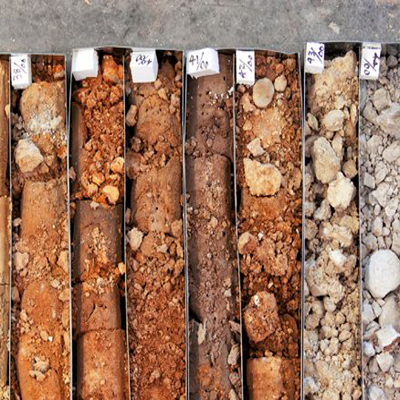Engineering properties tests
Engineering properties tests (determining of strength and deformation parameters) Unconfined compression strength - determination of the unconfined compressive strength of cohesive soil of the axial load.
Consolidation Test(One-dimensional consolidation properties)
Determining the magnitude and rate of consolidation of soil when it is restrained laterally and drained axially while subjected to incrementally applied controlled-stress loading. Data from the consolidation test are used to estimate the magnitude and rate of both differential and total settlement of a structure or earth fill. Estimates of this type are of key importance in the design of engineered structures and the evaluation of their performance.
Consolidated undrained triaxial compression Test
Determination of strength and stress-strain relationships of cohesive soil when the specimens are isotropic ally consolidated and sheared in compression without drainage at a constant rate of axial deformation. Data from the undrained triaxial compression test are used in geotechnical engineering analysis to predict how the material will behave in a larger-scale geotechnical engineering applications. An example would be to predict the stability of the soil on a slope, whether the slope will collapse or whether the soil will support the shear stresses of the slope and remain in place. Undrained triaxial compression tests are used along with other tests to make such engineering predictions.



